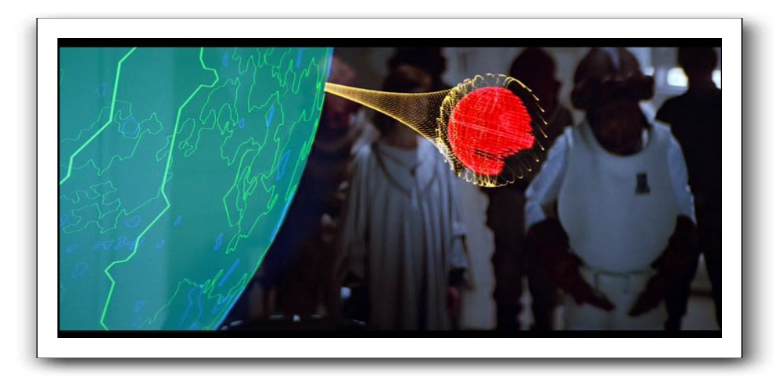Star Wars: Economy Of Mechanism
Before I start on the Star Wars part of today’s Friday Star Wars Security blogging, I need to explain who Saltzer and Schroeder are, and why I keep referring to them. Back when I was a baby in diapers, Jerome Saltzer and Michael Schoeder wrote a paper “The Protection of Information in Computer Systems.” That paper has been referred to as one of the most cited, least read works in computer security history. And look! I’m citing it, never having read it.
If you want to read it, the PDF version (484k) may be a good choice for printing. The bit that everyone knows about is the eight principles of design that they put forth. And it is these that I’ll illustrate using Star Wars. Because lets face it, illustrating statements like “This kind of arrangement is accomplished by providing, at the higher level, a list-oriented guard whose only purpose is to hand out temporary tickets which the lower level (ticket-oriented) guards will honor” using Star Wars is a tricky proposition. (I’d use the escape from the Millennium Falcon with Storm Trooper uniforms as tickets as a starting point, but its a bit of a stretch.)
On to the principle:
Keep the design as simple and small as possible.This well-known principle applies to any aspect of a system, but it deserves emphasis for protection mechanisms for this reason: design and implementation errors that result in unwanted access paths will not be noticed during normal use (since normal use usually does not include attempts to exercise improper access paths). As a result, techniques such as line-by-line inspection of software and physical examination of hardware that implements protection mechanisms are necessary. For such techniques to be successful, a small and simple design is essential.

And so lets look at the energy shield which protects the new Death Star. It is, as General Akbar tells us, projected from a base on the nearby forest moon of Endor. And as you may recall, there were not only extra access paths which required reinforcement, but additional threats which hadn’t been considered.
Firstly, why is it on the forest moon at all? Presuming that energy shields follow some sort of power-absorbtion law, the closer the shield is, the less power it will draw. But more importantly, being on the moon means that it is surrounded by forest, rather than cold, hard vacuum. The shield generator becomes harder to protect, meaning that additional protection mechanisms, each of which can fail, are needed.
Presumably, the Empire has power generation technology which drives the Death Star, and also the Star Destroyers. There’s no need to rely on a ground-based station. The ideal placement for the energy shield is inside the Death Star, and traveling with it.
But instead, there’s this bizarre and baroque arrangement. It probably comes from a fight between the Generals and the Admirals. The Generals wanted a bit of the construction process, and this was the bureaucratic bone thrown to them.
Expensive it was. mmm?
While the Death Star’s superlaser was operational, the entire vessel was not. Perhaps the completed vessel would have onboard shields.
Further, the Emperor was seeking to draw the Rebels into a trap. They would have suspected the mission was too easy if the supposedly unprotected Death Star was sitting around with no starfighters, no support vessels and no shields. So it drew the assault force to the planet, which they hoped to delay the retreat of the Alliance fleet.
The Emperor said, “Now witness the power of this fully armed and operational battle station.” He didn’t just say “fully armed.”